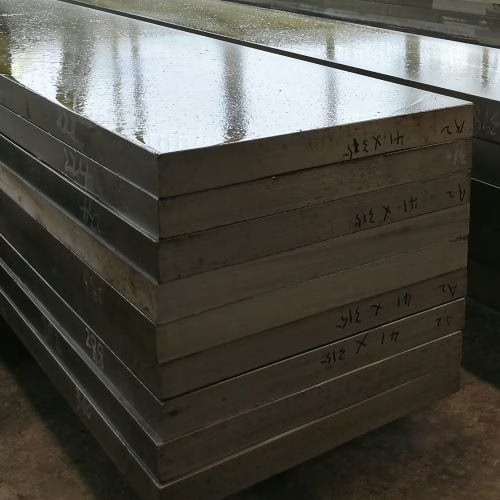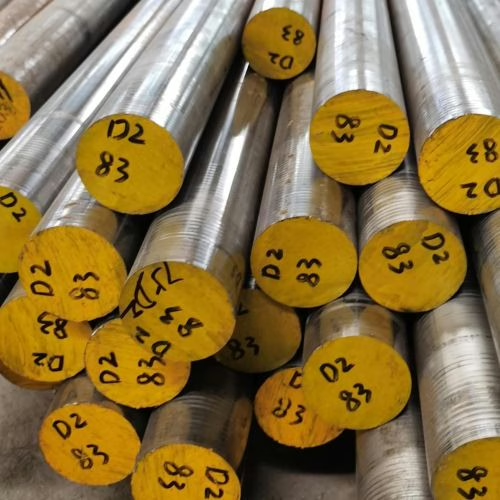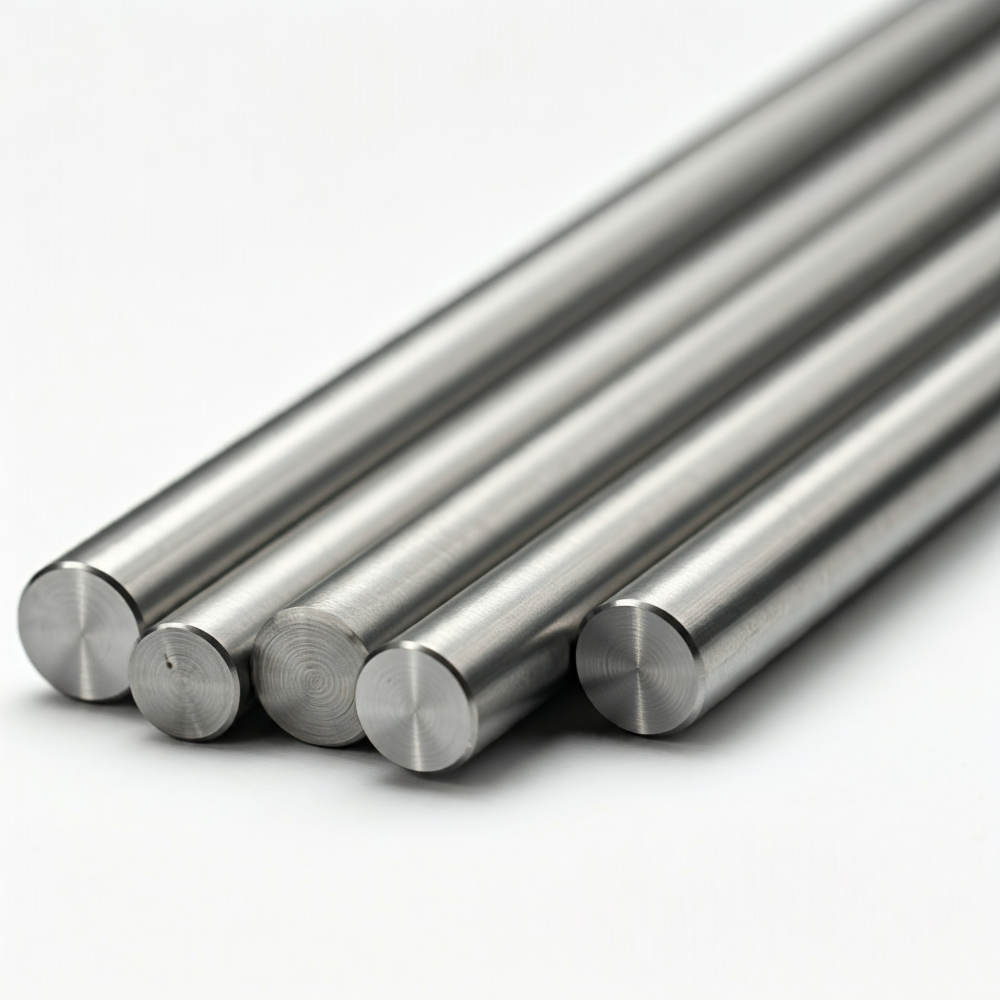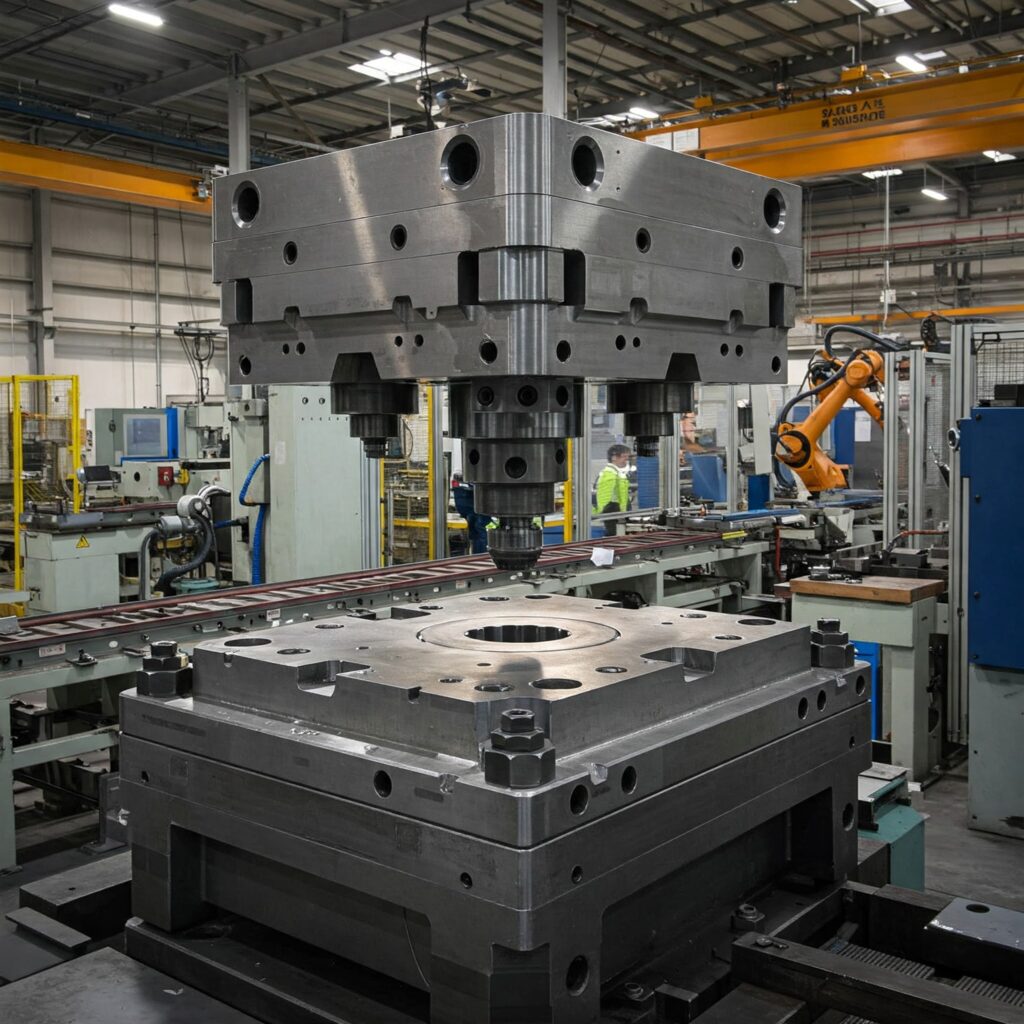Within the core category of cold work tool steels, AISI A2 és D2 are widely used in industrial applications. In the AISI classification system, A2 belongs to the “air-hardening, medium-alloy” group (Group A), while D2 belongs to the “high-carbon, high-chromium” group (Group D). A2 is the mainstream air-hardening tool steel today, offering excellent hardenability, good wear resistance, and higher toughness compared to other tool steels. Conversely, the high-carbon, high-chromium steel grade D2 has become the industry benchmark, against which the wear resistance and dimensional stability of other tool steels are measured. The core trade-off when selecting between these materials lies in their inherent properties: A2 offers superior toughness and ductility, while D2 possesses inherently stronger wear resistance, potentially exceeding A2 by 30% to 40%.
Is A2 steel better than D2 steel? When deciding between tool steels, specifically AISI A2 and AISI D2, it’s not just about which one is “better.” Both are excellent cold-work tool steels, but they shine in different situations. The key is understanding your specific needs and matching them to the right steel. Let’s break down their characteristics.
What is A2 Tool Steel
AISI A2 is categorized as a medium-alloy, air-hardening, cold-work tool steel (Group A), and is widely regarded as the principal air-hardening die steel used today. It strikes the perfect balance between toughness and wear resistance. The typical chemical composition of A2 includes approximately 1.00% carbon, 5.0% to 5.25% chromium, 1.10% to 1.25% molybdenum, and 0.25% vanadium.
A2 is commonly used as a versatile choice across various cold working applications. Typical uses include shearing tools, punches, blanking and trimming dies, embossing dies, and forming dies. It is particularly suitable for applications demanding stringent dimensional stability, such as gauge and precision measuring tool manufacturing.
What is D2 Tool Steel
AISI D2 tool steel is a high-carbon, high-chromium, air-hardening cold-work steel (Group D). This steel grade is globally recognized as the benchmark standard for measuring the wear resistance and dimensional stability of other tool steels. AISI D2 tool steel is a high-carbon, high-chromium, air-hardening cold work steel (Group D). This steel grade is globally recognized as the benchmark for measuring the wear resistance and dimensional stability of other tool steels. Its typical composition is: Carbon (C) content, 1.40% to 1.60%; Chromium (Cr) content, 11.00% to 13.50%. This composition yields a large volume fraction of hard, alloy carbides, primarily chromium-rich M7C3 carbides, which exhibit excellent abrasion resistance. This carbide network improves wear resistance by 30% to 40% compared to A2. However, the high content of hard carbide-forming elements—particularly chromium—makes D2 steel extremely difficult to machine and grind.
D2 steel is suitable for applications that demand ultimate durability and extended service life, particularly in critical uses where sharp edges are required under abrasive conditions. Typical applications include: long-life blanking dies, cold forming dies, laminating dies, thread rolling dies, as well as shearing tools and slitting tools.


A2 vs. D2: A Head-to-Head Comparison of Key Properties
Chemical Composition and Microstructure
D2 steel is a high-carbon, high-chromium steel. From a microstructural perspective, these elements form a large amount of carbides, particularly the chromium-rich M7C3 carbides1. It is these carbides that give D2 its high wear resistance and hardness. After appropriate heat treatment, the volume fraction of undissolved carbides in the microstructure of D2 is approximately 13%, significantly higher than that of A2.
The approximately 5% chromium content in A2 steel confers it with resistance to softening at high temperatures. A2 exhibits good wear resistance due to its microstructure, which features uniformly distributed high-carbon martensite structures and carbides. Although A2 contains alloy carbides, its grain size is smaller than that of the D2 series steels2.
Toughness vs. Hardness and Wear Resistance
Both D2 tool steel and A2 tool steel exhibit excellent wear resistance, with D2 surpassing A2 in this regard. A2 steel, however, offers superior toughness. D2 steel’s lower toughness stems from its high carbon content, and it is precisely these carbides that confer D2 steel’s outstanding wear resistance. Wear resistance and toughness cannot be achieved simultaneously.
- A2: The Toughness Advantage. Toughness refers to a material’s ability to resist fracture, spalling, or cracking when subjected to impact or shock loads. AISI A2 tool steel exhibits significantly superior toughness compared to the D2 grade. When component fracture risk is a primary consideration, or in applications involving high stresses and intermittent impacts, A2 steel is often the preferred choice.
- D2: The Wear Resistance Advantage. Wear resistance is the ability to resist the effects of abrasion and erosion encountered from contact with work materials, grit, or scale. D2 tool steel is the standard against which other cold-work tool steels are measured for abrasion resistance, possessing extremely high levels of wear resistance. The microstructure of D2 steel contains a high volume fraction of hard residual alloy carbides (particularly chromium-rich M₇C₃ carbides), which resist penetration by abrasive particles and maintain the cutting edge. This carbide-rich microstructure gives D2 steel approximately 30% to 40% higher wear resistance than A2 steel.
Edge Retention
Both A2 and D2 tool steels require heat treatment to achieve high hardness, a critical property for cold-working tools to possess sufficient strength and wear resistance. A2 typically achieves a working hardness of 57 to 62 HRC, while D2 ranges from 58 to 64 HRC. A2 steel exhibits good wear resistance, but its lower alloy content (approximately 1.00% carbon and 5.0% chromium) results in smaller carbide particles, significantly reducing its edge retention compared to D2 steel.
Hardenability and Heat Treatment
Air Hardening and Distortion
A2 and D2 are both steel grades that primarily use air quenching. Air quenching refers to the process of cooling from the austenitizing temperature to room temperature, thereby achieving complete hardening. Its advantages include minimal material deformation and a low risk of cracking. Compared to oil-quenched or water-quenched steel, A2 and D2 exhibit less deformation, precisely because the temperature change during air quenching is very slow.
Both A2 and D2 exhibit excellent dimensional stability during quenching. When air-quenched at the appropriate quenching temperature, A2 expands by approximately 0.001 inches per inch. D2 achieves so-called “zero-dimensional change” by precisely controlling the balance between austenite and martensite through multiple tempering cycles. We would like to emphasize that D2 retains up to 20% of its austenite structure after quenching. If not properly treated through subsequent tempering or low-temperature processing, this may lead to dimensional instability.
Edzés
A single tempering cycle is usually sufficient for A2, while D2 requires a complex tempering cycle. The single tempering temperature for A2 is 400°F (205°C). If a second tempering cycle is required, the temperature is slightly reduced to 375°F (190°C). The purpose of the second tempering cycle for A2 is to refine the grain structure. After the second tempering cycle, A2 is particularly beneficial for parts with complex cross-sections, sharp angles, or parts requiring longer tool life and better toughness.
For D2, the single tempering temperature is 400°F (205°C), which can achieve a hardness of approximately 62 HRC. However, the more recommended and common method for D2 is double tempering. The first tempering temperature in the double tempering process is 960°F (515°C), followed by a second tempering at 900°F (480°C), with each tempering lasting 2 hours per inch of cross-section. This high-temperature double tempering process refines the grain structure, significantly enhancing wear resistance and stress relief. For D2, a high-carbon, high-chromium air-hardening steel, we strongly recommend double tempering, and in some cases even triple tempering, to promote the transformation of residual austenite into martensite.
Megmunkálhatóság és csiszolhatóság
A2 is easy to machine and grind, while D2 is difficult to machine and grind. If the machining and grinding of W1 steel is set to 100, then A2 scores 60 and D2 scores 45. The above text explains why D2 is difficult to machine and grind from the perspectives of composition and microstructure. This is another example of the two sides of the same coin.
Korrózióállóság
AISI D2 tool steel significantly outperforms most non-stainless tool steels in stain and corrosion resistance. However, D2 is not truly stainless because its high chromium content is primarily occupied by abundant hard carbides, reducing the “free” chromium available in the martensitic matrix to form a passivation film.
A2 tool steel lacks corrosion resistance due to insufficient alloy content and is prone to rusting in humid or corrosive environments. Regular maintenance measures (such as oiling or applying protective coatings) are required during storage and use to prevent atmospheric degradation.
Alkalmazások
D2 Tool Steel Applications: D2 is widely used for long-run dies. Its exceptional wear resistance makes it ideal for:
- Blanking, Forming, and Deep Drawing Dies: Especially for long production runs, cutting laminations, and thread rolling.
- Piercing Punches and Dies: Due to its high wear resistance.
- Shear and Slitter Knives: For high production on thin or medium-thickness stock.
- Gages, Burnishing Tools, Rolls, Brick Molds: Where maximum abrasion resistance and dimensional stability are paramount.
- Hot Trimming of Forgings: Although primarily for cold work, D2 can be used for hot trimming when toughness is less critical.
A2 Tool Steel Applications: A2 is a versatile general-purpose choice, prized for its balance of abrasion resistance and toughness, along with minimal distortion in heat treatment. Common applications include:
- General Purpose Dies and Punches: For blanking, forming, and drawing, especially where good abrasion resistance and improved toughness are needed.
- Master Hubs and Molds: Particularly for small molds where good wear and dimensional stability are important.
- Shear Blades: For cold shearing, offering good wear resistance.
- Saws: It’s a general-purpose material for many saw applications.
- Solid Dies: Often preferred over D2 or D3 for solid punches and dies where extensive grinding is not feasible, because A2 offers a better balance of toughness and hardenability in larger sections.
Strategic Selection Considerations
When choosing between D2 and A2, consider the following:
- Production Volume and Abrasiveness: D2 is suitable for extremely long production cycles or highly abrasive workpiece materials, while A2 is suitable for medium production cycles or low-abrasive materials.
- Impact Loading and Chipping Risk: When it comes to materials used for making knives, A2 steel exhibits higher toughness and ductility, making it more suitable for knife applications. D2 steel, on the other hand, is too brittle and prone to chipping.
- Fabrication Costs: D2 material is more difficult to machine and grind, resulting in higher processing costs compared to A2 material.
Frequently Asked Questions
The optimal choice depends on the required trade-off in performance. D2 is generally superior in terms of maximum edge retention and wear resistance. This makes it a strong choice where maintaining a sharp cutting edge over long use is critical. Conversely, A2 offers a better overall balance due to its significantly higher toughness and ductility than the D-series steels. A2 is the safer option for knives subjected to shock loads or lateral stress, where minimizing the risk of chipping or cracking is paramount.
D2 is not substantially harder than A2 in terms of measurable bulk hardness (HRC). Both steels operate effectively in the same high hardness ranges, typically between 58 and 62 HRC. The key difference lies in performance at that hardness level. D2’s superior alloying leads to wear resistance improved by 30% to 40% over A2, due to the large volume fraction of hard carbides, regardless of whether the final measured HRC value is marginally higher than A2’s.
Yes, D2 tool steel is notoriously difficult to sharpen, grind, and machine. The high-carbon and high-chromium content in D2 produces a large volume of extremely hard, alloy carbides, specifically chromium-rich M7C3 types. These carbides are highly abrasive, causing rapid wear on sharpening equipment and cutting tools. D2 has a low machinability rating, typically rated around 45, compared to 1% carbon steel, which is rated at 100.
Yes, D2 tool steel will rust, as it is not considered a true stainless steel. D2 contains high chromium content, which approaches the minimum 11% required for stainless properties. However, D2’s high carbon content binds much of this chromium into hard alloy carbides, reducing the amount of “free” chromium available in the steel matrix to form the protective passive oxide film. This material provides appreciable resistance to staining after hardening and polishing, but still requires maintenance to prevent atmospheric corrosion.
In summary, if you need a material with better wear resistance, D2 is the better choice. The advantage of A2 lies in its better toughness and ductility. An advantage in one situation may become a disadvantage in another, so it is essential to thoroughly understand the characteristics of both materials to make the correct choice.


